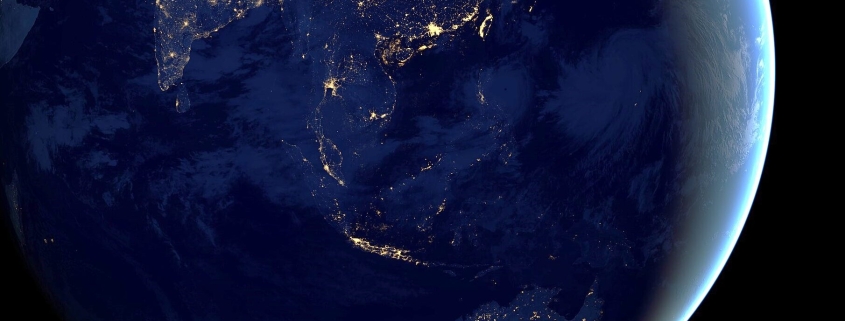Strengthening Australia’s space cooperation with South Korea
The time is ripe for Australia and South Korea to strengthen cooperation in space, through embarking on joint projects and initiatives that offer practical outcomes for both countries. This is the finding of a new ASPI report by an ASPI visiting fellow from South Korea’s Defence Acquisition Projects Agency (DAPA), Sangsoon Lee, on the opportunities ahead for Australia and South Korea in terms of space cooperation.
Lee’s paper makes clear that there are opportunities to boost space cooperation and development to mutually benefit both states in areas such as national security, economic growth and resource management.
The paper argues that the first area of collaboration should be in joint research and development into small satellite technologies. These are satellites under 100kg, which, if developed collaboratively, could build domestic manufacturing skills and infrastructure in this important technology area. The paper notes that constellations of small satellites are more effective in strengthening resilience in the face of growing counterspace threats. Lee provides the example of South Korea requiring small satellites to enhance surveillance and reconnaissance of North Korea, and he notes that Australia also has a requirement for Earth observation satellites to support civil and defence needs.
A constellation of small satellites, jointly developed by Australia and South Korea, could thus benefit both countries. Although the current Australian government cancelled the National Space Mission for Earth Observation (NSMEO) project in June 2023, the requirement that it was to meet—for space-based Earth observation and intelligence, surveillance and reconnaissance— remains in place. By jointly developing such satellites, the paper argues, the Australia and South Korea could gain benefits not only from enhancing sovereign space capability but also through developing rapid technological innovation cycles.
Building on from collaboration on small satellites, the paper then suggests collaboration in the critical area of positioning, navigation and timing (PNT). This could be achieved by establishing suitable ground stations in Australia to support and enhance South Korea’s planned Korean Position System (KPS) and the Korean Augmentation Satellite System (KASS). Australia is optimally located for ground stations, as Japan has recognised in an agreement for this country to host the Japanese Quasi-Zenith Satellite System. Furthermore, by hosting these ground facilities, such collaboration would complement Australia’s existing Southern Positioning Augmentation Network (SouthPAN), which is also used by New Zealand. The overall outcome would be to enhance the accuracy, diversity and resilience of PNT services open to both states.
By far the most significant aspect of South Korean and Australian space cooperation could be space launch. Through streamlining procedures and regulatory arrangements such as launch permits export licenses and payment of export-import taxies, cross-border movement and launch of commercial rockets could become more efficient. To this end, the paper recommends that South Korea and Australia should negotiate an agreement to build and operate a permanent space launch site that takes full advantage of Australia’s proximity to the equator and distance from potential threats.
Rockets launched close to the equator for easterly orbits gain the starting advantage of the Earth’s rotational velocity, so the launch cost per kilogram is lower than for launches from higher latitudes. For those orbits and also for orbits that cross the poles, launches from Australia do not endanger people by flying over heavily populated territory. South Korea lacks proximity to the equator, and its rockets must dodge the territory of neighbours.
Lee’s paper notes that some cooperation is already underway in regard to launch. South Korean defence company Hanwha Group is exploring use of Australian launch services through a partnership with Gilmour Space, which intends to launch its Eris 1 rocket from Bowen, Queensland. Korean firm Innospace has signed an agreement with Equatorial Launch Australia for launch services from that company’s proposed Cape York space port.
In addition to streamlining regulatory arrangements for easier collaboration, Lee’s paper argues that a dedicated South Korean launch site, established by Seoul, could then benefit local economies.
Finally, the paper argues that there should be increased collaboration in space situational awareness and space traffic management as part of broader cooperation in space security. This makes inherent sense given the reality that space, as an operational domain in its own right, is highly contested and likely to become a warfighting domain in a crisis. Boosting cooperation on space situational awareness is a key step towards collaborating on deterrence through resilience, which other aspects of cooperation, such as small satellite development and responsive launch also contribute to.
Lee’s paper concludes with a recommendation for a space dialogue that brings together government, the private sector and civil society. This can help build collaboration and see a regular sharing of perspectives on both practical collaboration and policy development. Outcomes could include a government-to-government agreement on space launch cooperation and there could be a technology working group to support cooperation in areas such as small satellite development and PNT.
That would provide a foundation for more ambitious cooperation, with Lee’s paper considering ‘moonshot’ projects such as a lunar rover to be jointly developed and made by South Korea and Australia. Others could be a collaborative mission to a resource-rich asteroid and or research on technologies such as space manufacturing, resource utilisation and space logistics.
Australia and South Korea are both new space powers, so it makes sense for them to work together to make faster progress in using the space domain to their mutual benefit. Sangsoon Lee’s analysis is excellent and thought provoking. It represents a good contribution to any future discussion between South Korea and Australia on strengthening space cooperation.


